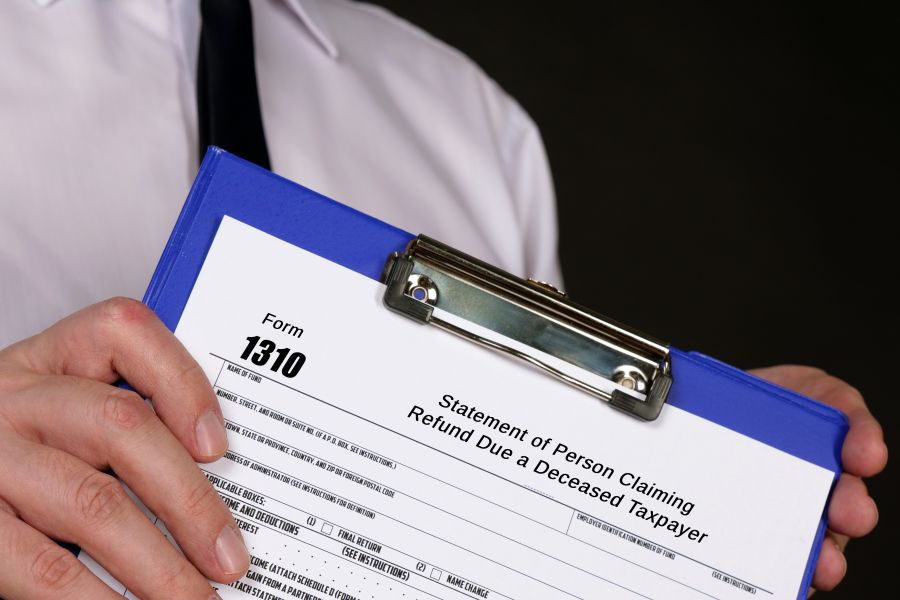Filing a Final Return for a Deceased Taxpayer

As reported via IRS Tax Tip 2023-51 4/17/2023
After someone with a filing requirement passes away, their surviving spouse or representative should file the deceased person’s final tax return. On the final tax return, the surviving spouse or representative should note that the person has died. The IRS doesn’t need a copy of the death certificate or other proof of death.
Usually, the representative filing the final tax return is named in the person’s will or appointed by a court. Sometimes when there isn’t a surviving spouse or appointed representative, a personal representative will file the final return and attach Form 1310, Statement of Person Claiming Refund Due a Deceased Taxpayer.
Things to know about filing the final tax return
Generally, the final individual income tax return of a deceased person is prepared and filed the same way as if the person were alive.
- The return must report all income up to the date of death and claim all eligible credits and deductions.
- If the deceased person did not file individual income tax returns for the years before their death, their surviving spouse or representative may have to file prior year returns.
- The IRS considers the surviving spouse married for the full year their spouse died if they don’t remarry during that year.
- The surviving spouse is eligible to use filing status “married filing jointly” or “married filing separately.”
- The same tax deadlines apply for final returns. If, for example, the deceased person died in 2022, their final return is due by April 15th, unless the surviving spouse or representative has an extension to file.
- When e-filing, the surviving spouse or representative should follow the directions provided by the tax software for the correct signature and notation requirements.
- For paper returns, the filer should write “deceased,” the person’s name and the date of death across the top.
Who should sign the tax return
Here’s who should sign the tax return:
- Any appointed representative must sign the return. If it’s a joint return, the surviving spouse must also sign it.
- If there isn’t an appointed representative, the surviving spouse filing a joint return should sign the return and write in the signature area, “filing as surviving spouse.”
- If there’s no appointed representative and no surviving spouse, the person in charge of the deceased person’s property must file and sign the return as “personal representative.”
Other documents to include with the final tax return
Court-appointed representatives should attach a copy of the court document showing their appointment. Representatives who aren’t court-appointed must include Form 1310, Statement of Person Claiming Refund Due a Deceased Taxpayer to claim any refund. Surviving spouses and court-appointed representatives don’t need to complete this form.
If tax is due, the filer should submit payment with the return or visit the payments page of IRS.gov for other payment options. If they can’t pay the amount due immediately, they may qualify for a payment plan or installment agreement.
Qualifying widow or widower
Surviving spouses with dependent children may be able to file as a Qualifying Surviving Spouse for two years after their spouse’s death. This filing status allows them to use joint return tax rates and the highest standard deduction amount if they don’t itemize deductions.
More information
- Publication 559, Survivors, Executors and Administrators
- Tax Topic No. 356, Decedents
- How Do I File a Deceased Person’s Tax Return?
(This is Blog Post #1495)


